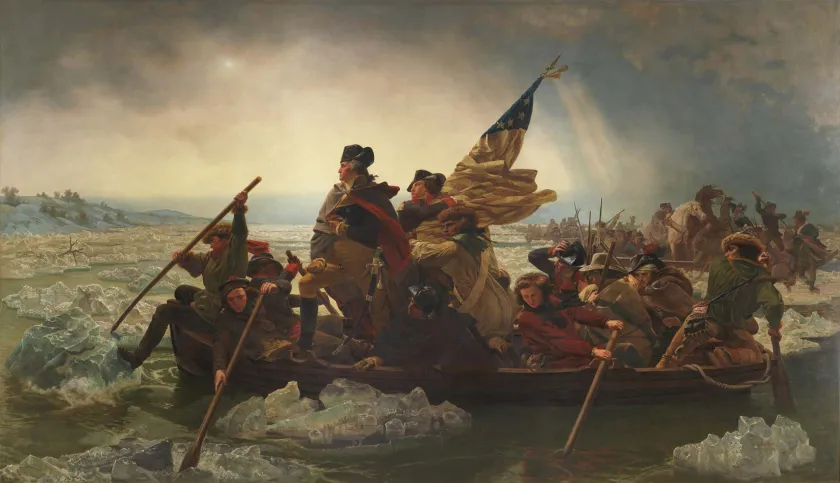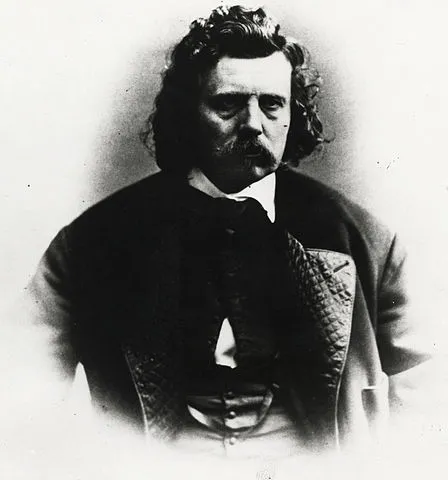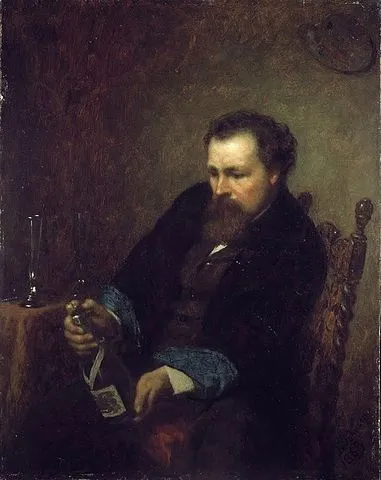The Art of War

War is bloody, violent, and brutal — some describe it as inhumane. Yet despite its cruelty, war and its struggles have been well-documented and explored by artists in an effort to understand the true motives of violence and rebellion. From the spirit of ordinary soldiers to the devotion of American leaders, art has served as an expressive historical tool to memorialize the struggles America has endured.
The American Revolution
The American Revolution brought a period of radical change in American ideology and politics in the American colonies. These radical changes have been well preserved in historical art—revolutionary artists have been able to depict harrowing battles through vibrant oil paints, capture moments of bravery in striking graphite, and mold American sacrifice through clay.
Emanuel Leutze, Washington Crossing the Delaware, 1851

More specifically, in his oil painting titled Washington Crossing the Delaware, Emanuel Leutze captures the American spirit of independence and rebellion through his overall composition and use of colors and symbols.
The triangular composition of this piece immediately draws the viewer's eyes to the center— towards George Washington. Washington's formidable, upright stature portrays himself as a strong and resilient leader juxtaposed with the huddling soldiers and dark, icy river. In addition, Washington's boat is filled with a diverse array of men, including Native Americans, African Americans, soldiers, and farmers. In the center of these men, the American Stars and Stripes flag is held high by Lieutenant James Monroe. Leutze shows the unity of these men underneath the American flag as a symbol of patriotism in a time of turbulence, which induces a sense of national pride and drive for independence.

Although George Washington crossed Delaware in darkness at night, Leutze shows the historic event at the break of dawn. The break of dawn is symbolic— as the dark clouds part to reveal the rising sun, a new day begins, and a brighter American future is uncloaked. While Leutze's depiction of Washington Crossing the Delaware may not be historically accurate, he is able to glorify Washington as a glorious leader and depict the American spirit for independence that words cannot adequately express alone.
The Civil War
While a period of division and sectionalism triggered the American Civil War, a new period of nationalism and American strength emerged from its violence. Historically, artists have captured the series of rapid changes instilled by the Civil War, such as the Reconstruction era, the abolition of slavery, or the emergence of equality and liberty. As a result, many critics have regarded the Civil War as an art revolution— a shift from glamorizing American battlefields to capturing the transformations brought by war.
Eastman Johnson, The Girl I Left Behind Me, 1872

In his oil painting, The Girl I Left Behind Me, Eastman Johnson explores the social and political changes brought by reconstruction. While the girl's youth and schoolbooks suggest she is embarking on a short trip to school, the gray storm and her gleaming wedding ring suggest otherwise. She stands high above the hill with firmly anchored boots and a gaze of determination. The weather and elements mirror her emotions— as the dark clouds swirl around her body, they break to reveal a brilliant patch of peaceful sky. The ending path and swirling storm signify an uncertain American future. Still, the girl's face of determination and the exposed patch of sky is reminiscent of rebuilding a country and reconstructing a new future.

While the girl's demeanor and the clearing storm may suggest a positive theme, the background suggests something darker. A jagged picket fence is symbolic of the division between the North and the South, and small swirling clouds are speculated to be cannon shots. The true intention of Johnson's painting is unknown— perhaps the girl is forging a path toward a brighter future, or maybe she is fleeing from the destruction of war. This ambivalence creates an aura of mystery; It leaves Johnson's work open to interpretation. The artwork's meaning is constantly expanding and ever-changing as different viewers share their interpretations, making Johnson's work all the more meaningful.
War artists have been able to memorialize the past and educate the present through art. Art has documented the human spirit and ideological changes in American culture, whether it is the American ideal of independence or rising sectionalism. From Emanuel Leutze to Eastman Johnson, historic artists have preserved American battles as cornerstones in history, continuing to inspire America and the next generations.






